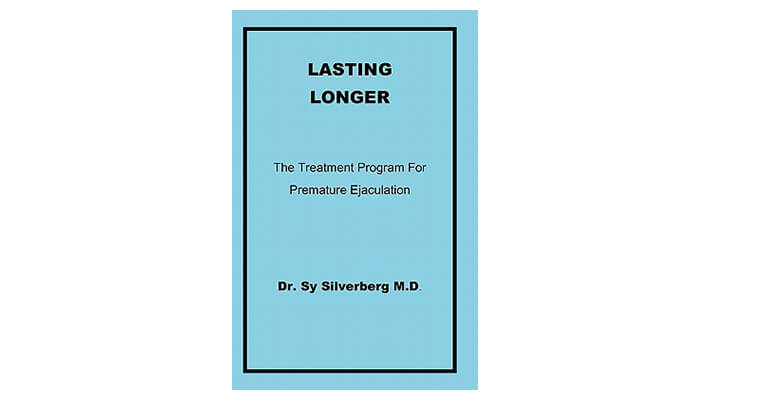Out of all the premature ejaculation techniques, reverse kegels seem to cause the most confusion – especially when learning which muscles to use.
Despite the initial difficulty, it’s worth sticking with it, as it’s a useful technique for keeping yourself calm during sex. And in my experience, it’s more effective than repeatedly trying to keep the point of no return at bay with your strongest kegel squeeze.
In this article, you’ll learn exactly how to do reverse kegels and why it’s important to practice them alongside normal kegels. I’ll also suggest how to add reverse kegels into the routine described in my complete guide to kegels (a free article, in case you’re wondering).
Why are reverse kegels difficult?
The physical ‘how to’ is the part that people struggle with the most. It’s not easy working out which muscles to target, and even harder to do the right thing with those muscles.
There are three reasons I think men have problems with this:
- You haven’t done enough normal kegels, so you don’t understand the muscles involved.
- The movement you need to do is a bit strange, which makes you doubt it’s right.
- Knowing exactly when to do reverse kegels during sex is confusing in itself.
Many readers have left comments or emailed me in the years since first writing this article to say they aren’t sure if they’re doing it right. So I’ve since edited it to try and make it as clear as possible.
First learn normal kegels
The best way to identify the correct muscles is to first learn the normal version. Reverse kegels are targeting the same muscles, but in a more subtle way.
These aren’t muscles you normally have an awareness of, and it can take time to develop the ability to either squeeze or relax them.
So if you get the hang of normal ones, you’ll have a better chance of being sure you’re doing reverse kegels correctly.
Reverse kegels step by step
Step 1
Remember the classic kegel instructions about stopping yourself in the middle of peeing? This time, when you go for a pee try to gently force it out faster instead.
This is basically a reverse kegel of the key muscle – the Bulbocavernosus muscle – located at the base of the penis. You only need to do this once to get an idea for what it feels like. After that don’t try forcing out your pee any more and continue on to the next steps.
Step 2
Sit comfortably in a chair and relax for a few moments. Now gently try to simulate the muscle movement you would make if trying to do a poo or fart (don’t blame me for any accidents!)
This movement will be doing a reverse kegel of the Pubococcygeus muscle. Though it will also probably engage the Bulbocavernosus muscle as well.
Note: It’s unclear how important it is to be able to do a reverse kegel with both the front and back muscles. In my experience, the front one (Bulbocavernosus muscle) is more effective in controlling ejaculation.
However, it’s good to try to learn both as you may find that you need to focus on relaxing the entire area to develop any kind of control. Isolating them takes a lot of practice, so don’t worry if the whole area moves when practicing. Better control should develop naturally in time.
Step 3
Did you notice in both of these steps some movement in your stomach muscles, perhaps expanding or tensing? If not, do them again and you’ll probably notice some movement or tension.
This isn’t something to aim for when doing reverse kegels eventually, but it can help at the start to identify the correct movement.
Step 4
Now it’s time to add some breathing. Do the same steps again, but this time breathe in while doing them and allow your belly to expand. This is known as breathing from the diaphragm.
Most people breathe by expanding their chest. But you can also breathe by expanding your stomach instead. You might find that doing this helps you focus the movement on the BC muscle.
Step 5
Now you can put it all together. Do the simulated peeing and pooing motion, but also breathing out slowly from your belly, whilst keeping some light tension in the belly.
With the breathing and tensing, you should feel much more able to isolate the muscles and do a good reverse kegel. It does take practice though, so keep at it. You can try this for a few minutes a day until you get it right.
Step 6
Now for the really tricky part. Can you do reverse kegels without the help of breathing and tensing?
This can take a lot of practice, and even then you may never be able to do it without at least a little tension and stomach expansion. That’s fine, just try to reduce how much you rely on using the stomach to get the job done.
The key point here is that you need to be really relaxed. You need to mentally go inside your body and visualize the muscles relaxing and pushing out slightly.
Breathe slowly, deeply and relaxed while doing so, and try to focus on the area where the BC muscle is. Allow it to relax just by keeping your mind on it and trying to gently encourage it with your muscle control.
Step 7
Now’s the time for some real practice. While masturbating you can try to do 3 different things.
- Do normal kegels and see what effect it has on your sense of control.
- Switch to reverse kegels and see what happens to your physical arousal and control.
- Then try to just relax the whole area.
There’s no set way to do this, and it involves some experimenting and creativity from you. In my experience, it took a couple of weeks of playing around with the concept 3 or 4 times a week.
Eventually, I discovered that keeping relaxed was best. And when I felt tension creeping in, doing a reverse kegel could help restore the relaxation.
Step 8
If you have a partner you can eventually try reverse kegels during sex. In my experience, it’s best to do it when you’re on your back and she’s on top.
That way you have the best chance of relaxing and isolating the correct muscles. Again, some experimentation with positions might be needed before you find the right one to help you focus and relax.
Why are reverse kegels important?
This is an important point to remember: some men try to train very strong pelvic floor muscles because they read somewhere that it can stop them ejaculating.
Then they go overboard and try to hold the muscles as much as possible during sex. Either that or they think it gives them a better erection, so they continually pump the BC muscle during sex.
This is counterproductive though and encourages quicker ejaculation. Instead, normal kegel holds should only be done at the very last moment to try to stop yourself ejaculating. Or in the beginning to help yourself get a good erection.
If you’re trying to last longer, then at all other times during sex you should keep the PC and BC muscles relaxed. And doing reverse kegels is one way to accomplish this for three reasons:
- By training reverse kegels along with normal ones, you develop balance and control of the pelvic floor muscles
- If you aren’t able to keep relaxed during sex, then actively doing the motion of reverse kegels can help to achieve the relaxed pelvic floor you need to be able to last longer
- If you train it to a high level, you may be able to do reverse kegels so well that you can stop yourself ejaculating. You can do this before the point of no return and it’s usually more successful than waiting until the point when you need to do normal kegels.
So in some ways, you’re giving yourself two opposite weapons in the battle. You can do reverse kegels and keep relaxed as much as possible. Then if it all fails, switch to a normal kegel squeeze just before the moment of no return.
And finally, doing reverse kegels can help stop you from overtraining and creating an imbalance in your pelvic floor. So work on balance and control, not just strength.
A reverse kegel routine
Here are some ways to incoporate reverse kegels into a training regime with the normal version:
Plan A
You can do each normal kegel routine each day as described. Then at the end spend 2 or 3 minutes practicing reverse kegels.
So you could do this:
- Sit or lie down and relax for a minute.
- Breathe in for the count of 4 seconds and do a reverse kegel. Either with or without tension and belly breathing. Do whichever you can manage.
- Stop, relax and breathe out for 4 seconds.
- Repeat 9 more times, to make 10 sets.
- Do the same again, but this time breathing in for 6 seconds. Breathing out normally at the end of each 6 seconds.
- Now try and do the reverse kegel 10 times with normal breathing. See how much harder it is when you’re breathing out?
- Finally, hold the relaxed pushing out feeling for 30 seconds or as long as you can.
This is only a basic example routine, and you can add more sets and times to it as you get better at it.
Plan B
This time instead of doing the reverse kegels after the normal ones, you can do them alternately. Again it’s up to you to decide how to mix the sets, and it doesn’t really matter how you do it. Just don’t overdo it by doing it too many strong kegels.
Plan C
The final way is to do the normal kegal routine on one day, and the reverse routine either at a separate time the same day, or even the next day.
There’s no scientific evidence suggesting one way is better than another, so in my opinion you should aim for variety. Muscles adapt to training quickly, so the more you surprise them, the better the results.
Still having trouble identifying the right muscles?
Many readers have left comments saying they can’t identify the right muscle. The best way really is to focus on the muscle you need to use to make yourself pee faster.
Another way is to stand up when you have an erection. If you do a normal kegel, you should notice your penis rises. If you then do a reverse kegel, you should notice it drops downwards.
Your thoughts
Have you tried kegels? Feel free to share your experience and ideas, or ask questions below.
Even if some time has passed since the last comment, I never close comments on this site, so you will get a response.



